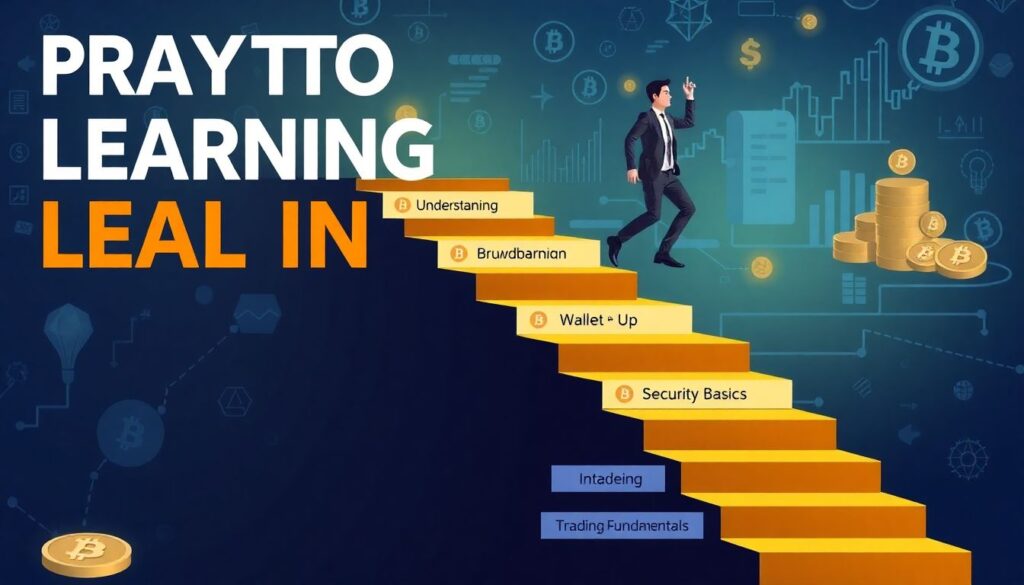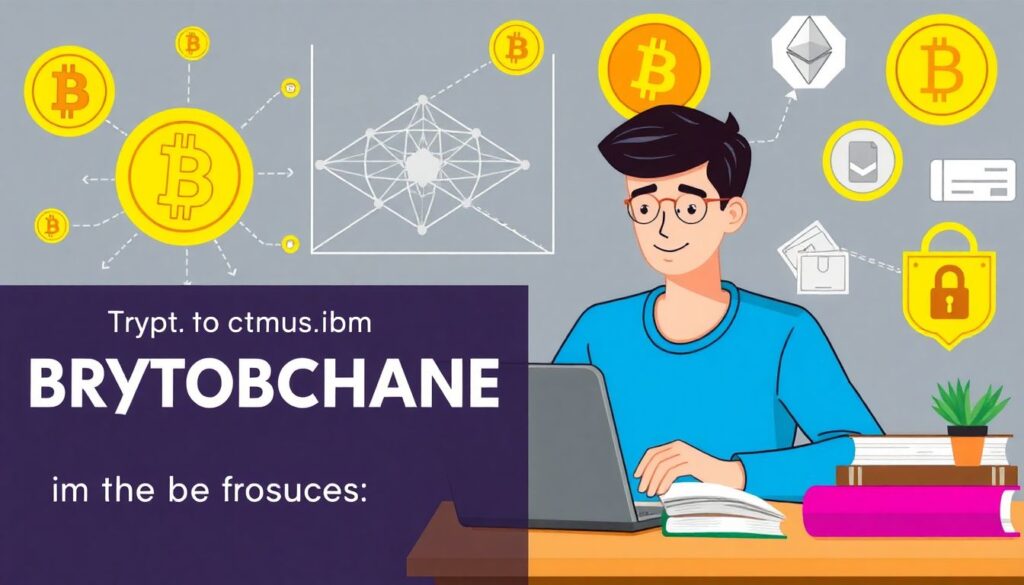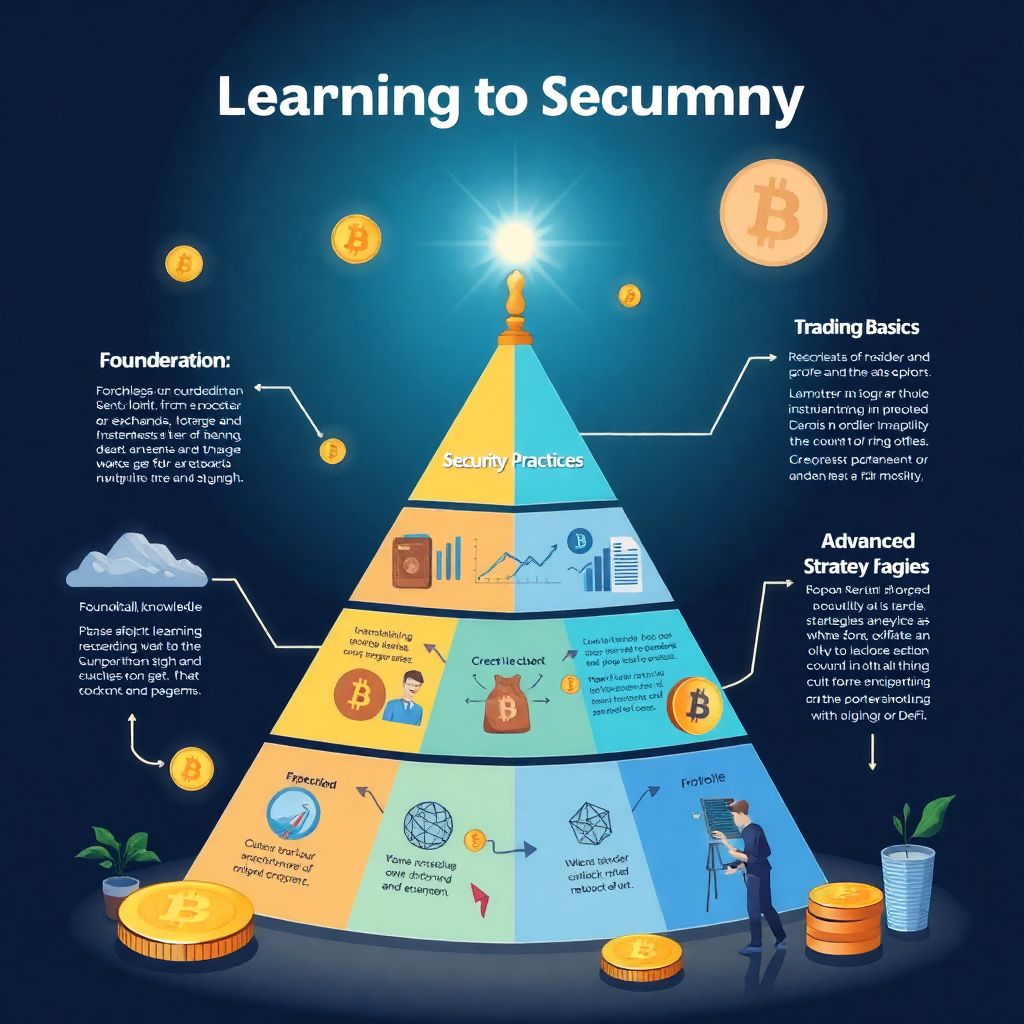Understanding the Landscape: Why a Crypto Learning Plan Matters
Before diving into the world of digital assets, it’s essential to build a structured and personalized crypto learning plan. Unlike traditional financial education, cryptocurrency education requires regular updates due to its rapid evolution and decentralization. A learning plan helps you filter noise, focus on fundamentals, and avoid costly mistakes. It also guides you through the layered complexity of blockchain technology, from basic terminology to advanced investment strategies.
Cryptocurrency operates at the intersection of finance, technology, and economics. This makes it both exciting and overwhelming. Without a clear roadmap, beginners often fall into the trap of hype-driven investments or incomplete knowledge. A well-structured crypto learning plan offers a scaffold to develop both theoretical understanding and practical skills—from wallet management to how to learn cryptocurrency trading safely.
Core Concepts: Definitions That Matter
To navigate this space, understanding key terms is non-negotiable. Let’s break down some foundational concepts.
– Cryptocurrency is a form of digital or virtual currency that uses cryptography for security and operates on a decentralized ledger called blockchain.
– Blockchain is a distributed database that stores data in a secure, transparent, and immutable way. Each “block” contains a set of transactions validated by a network of nodes.
– Wallets refer to software or hardware tools that allow users to store and manage their private keys, which grant access to their crypto assets.
– Exchanges are platforms where users can buy, sell, or trade cryptocurrencies, similar to traditional financial markets.
– Smart Contracts are self-executing contracts with the terms directly written into code, usually deployed on platforms like Ethereum.
Understanding these definitions isn’t just academic. For instance, knowing what a smart contract is helps you evaluate the potential of decentralized finance (DeFi) protocols, which is essential for informed crypto investment decisions.
Building the Framework: Stages of a Crypto Learning Plan

A practical crypto learning plan unfolds in progressive stages, each designed to build both confidence and competence.
Stage 1: Orientation and Safety

Start with the basics: What is cryptocurrency? How does blockchain work? At this phase, your goal is to build conceptual clarity and understand the ecosystem. Resources like beginner-friendly crypto investment courses can provide structured insight. Prioritize learning how to secure your assets: use of hardware wallets, recognizing phishing attempts, and setting up 2FA (two-factor authentication).
*Diagram description:* Imagine a pyramid. The base is labeled “Foundational Knowledge” (e.g., blockchain, wallets, exchanges), followed by “Security Practices”, then “Trading Basics”, and at the top “Advanced Strategies”. This visual reinforces the idea of layered learning.
Stage 2: Practical Engagement
Once you grasp the fundamentals, it’s time to get hands-on. Open demo accounts on reputable exchanges, experiment with small transactions, and practice reading charts. This is where blockchain technology training becomes critical. Platforms like Coursera, Binance Academy, or even GitHub repositories offer real-world applications in blockchain development and crypto analytics.
You should also begin to learn cryptocurrency trading in this stage. Understand the difference between spot and futures markets, how leverage works, and the psychological aspect of trading. Use simulated environments before risking real capital.
Stage 3: Specialization and Strategy
This is where your crypto learning plan becomes personalized. Are you more interested in decentralized finance (DeFi), NFTs, or algorithmic trading? Choose an area and go deep. Subscribe to newsletters, join Discord communities, and even consider enrolling in advanced crypto investment courses. These resources often include expert-led discussions, case studies, and portfolio-building exercises.
Comparative Perspective: Traditional Finance vs Cryptocurrency Education
Unlike traditional finance, which is deeply regulated and institutionalized, cryptocurrency education is more fragmented and community-driven. While universities offer degrees in finance and economics, most learning in crypto happens through online platforms, YouTube channels, and peer-to-peer forums.
In traditional markets, there’s often a long pathway through academia and licensing before one can actively invest. In contrast, anyone with an internet connection can enter the crypto markets. However, this accessibility is a double-edged sword—without a structured crypto learning plan, it’s easy to fall prey to misinformation or scams.
Real-World Example: Anna’s Journey from Novice to Trader
Consider Anna, a graphic designer who became curious about digital assets during the 2021 bull run. Instead of jumping in blindly, she developed a personal crypto learning plan. In the first month, she focused on cryptocurrency education through free online courses and YouTube explainers. She then practiced with a small amount of ETH on a testnet to understand wallet mechanics and gas fees.
By month three, Anna enrolled in a blockchain technology training program tailored for non-developers. She also began to learn cryptocurrency trading through simulated platforms, gradually building confidence. A year later, she specializes in NFT marketplaces and advises small businesses on accepting crypto payments.
Anna’s story illustrates the transformative potential of a deliberate approach. Learning by doing, with a clear plan, helped her avoid rookie mistakes and build genuine expertise.
Tools and Resources: Building an Ecosystem of Learning
To maintain consistency, combine various formats: podcasts, newsletters, open-source repositories, and live events. Tools like CoinMarketCap and DeFiLlama can help you analyze market trends, while block explorers (e.g., Etherscan) offer transparency into on-chain activity.
Engage with communities on Reddit, Twitter (Crypto Twitter or “CT”), and Discord servers. These platforms often surface new trends and risks before mainstream media. But remember: always verify information through reputable crypto investment courses or blockchain technology training platforms before acting on it.
Conclusion: The Road Ahead

Creating a crypto learning plan is more than just a checklist—it’s a dynamic strategy tailored to your goals, risk appetite, and learning style. With a foundation in cryptocurrency education, practical skills in trading, and ongoing exposure to blockchain technology training, you’re well-equipped to navigate this evolving landscape.
As the crypto space matures, the value of structured learning becomes undeniable. Whether you aim to trade, invest, or build within the ecosystem, a personalized and adaptive learning path is your best asset.

